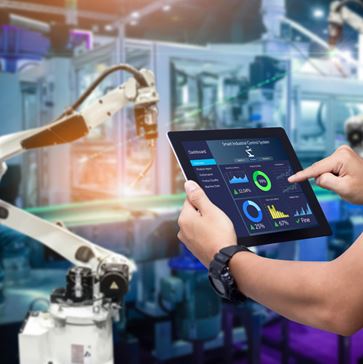
From data-crunchers to decision-makers: new perspectives for demand planners
Lennert Smeets - August 20

Demand planning has long been a race against time, chasing data, tweaking forecasts, and reacting to surprises. But what if demand planners could stop chasing and start leading?
I’ve worked as a demand planner myself, and I know how challenging the role can be. But we are on the brink of a new era, where demand planners no longer feel stuck in reactive mode. Instead, they are empowered to lead the way in balancing demand and supply.
Here are three key elements that are fundamentally redefining the role and elevating its strategic impact.
1. From number-crunchers to decision-shapers
Blog post
Traditionally, demand planners have spent most of their time creating and tuning forecasts - crunching numbers under tight deadlines, typically for thousands of SKUs. The source data is often delayed, incomplete, and biased. Market disruptions and increasingly complex product portfolios have only intensified the challenge, making the role feel like a constant game of whack-a-mole.
This is starting to change. With advances in AI, demand planners now have access to sophisticated tools to enable truly autonomous forecasting. These tools combine multiple data sources and eliminate bias to produce the most accurate forecast. Forecast value add (FVA) can be tracked automatically, so that planners only need to step in when it really matters.
This allows the focus to shift from pure forecasting to broader, business-oriented demand planning.

Blog post
“Demand planners can use powerful analytics and what-if event simulations to feed the decision-making process."
Backed by skilled data scientists, they will spend less time fine-tuning forecast numbers, and more time driving business outcomes like customer satisfaction, market share, CO₂ reduction, and profitability.
2. Facilitators of the demand-supply dialogue
As they adopt these new tools, demand planners will increasingly collaborate across departments. For example, they can support sales teams to refine the planning of commercial initiatives such as promotions and product launches, taking both market impact and supply chain implications into account. They will also share insights with marketing, finance, and procurement, and key internal and external partners.
Generative AI technology — such as chatbots and AI agents — will enhance this collaboration by helping demand planners communicate effectively and efficiently with all stakeholders.
In this new role, demand planners become smart facilitators of the crucial demand-supply dialogue. As true bridge-builders across the global supply chain, they will, for example, help sales and supply teams align on the promotional efforts that deliver the greatest business value.
Blog post
3. Leaders driving business ambitions
“Demand planning leaders are no longer lagging behind. They are stepping forward as proactive leaders, driving business decisions and helping to shape company ambitions. "
Their ability to unite demand and supply teams, and even engage crucial stakeholders outside the supply chain, makes them key players within the organization.

Blog post
At the same time, this expanded role comes with greater responsibility. Demand planners will be expected to reap benefit from disruption, helping their company to identify strategies that turn potential issues into opportunities for growth and improvement. To succeed, companies must invest in upskilling their planning teams and attracting talent with a broader business mindset.
The future looks bright
At OMP, we already see this transformation happening with our most forward-thinking customers. Innovations in our Unison Planning™ platform are being tested, adopted, and delivering real change. Together, we’re shaping a future where demand planners lead with insight, influence, and impact.
Ready to be part of this demand planning revolution?

Lennert Smeets
Senior Product Manager at OMP USA
Biography
Lennert oversees the R&D of OMP for Demand Management. He is mostly driven by looking for innovations that make our customer’s demand planning journey more manageable and, at the same time, more effective.





